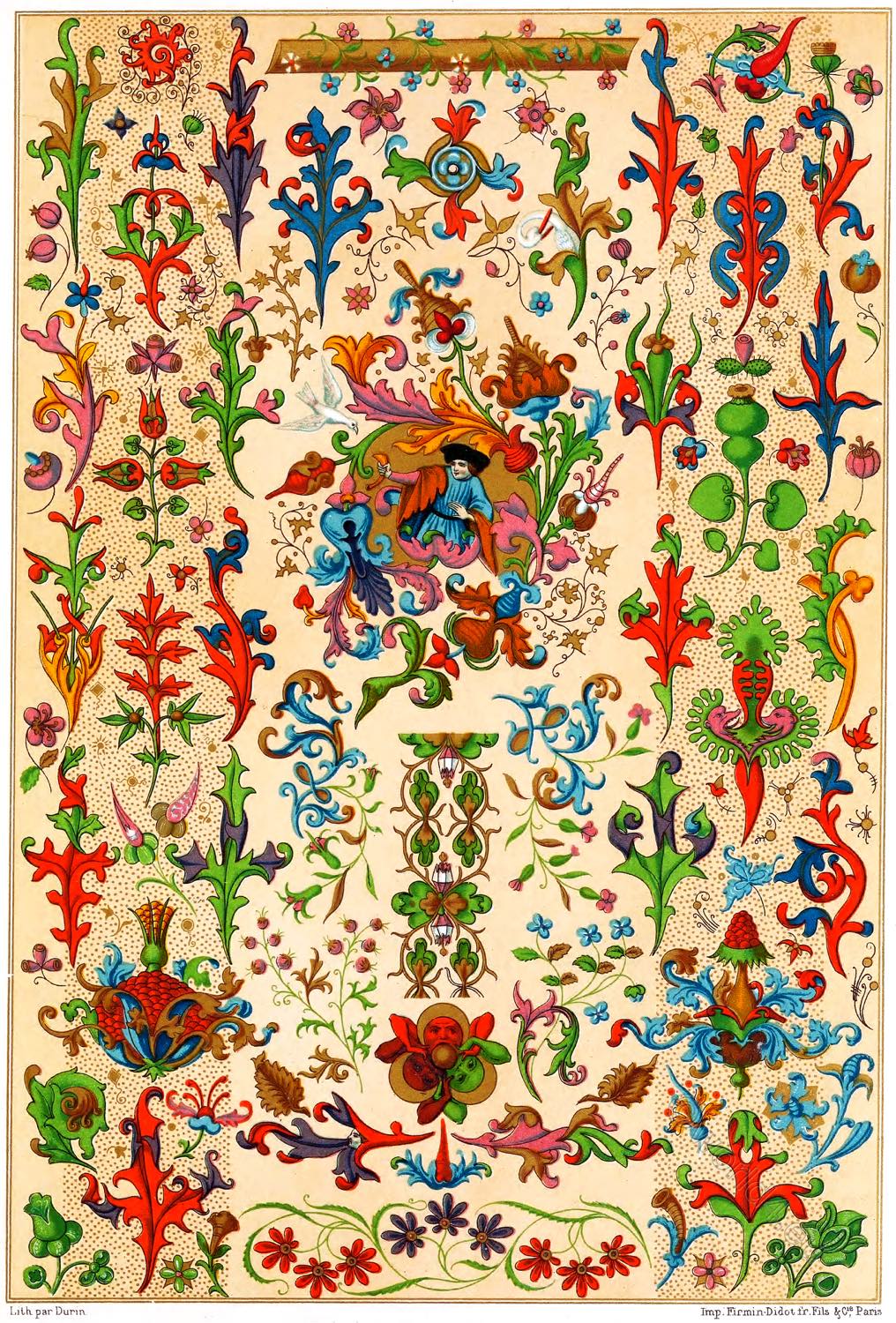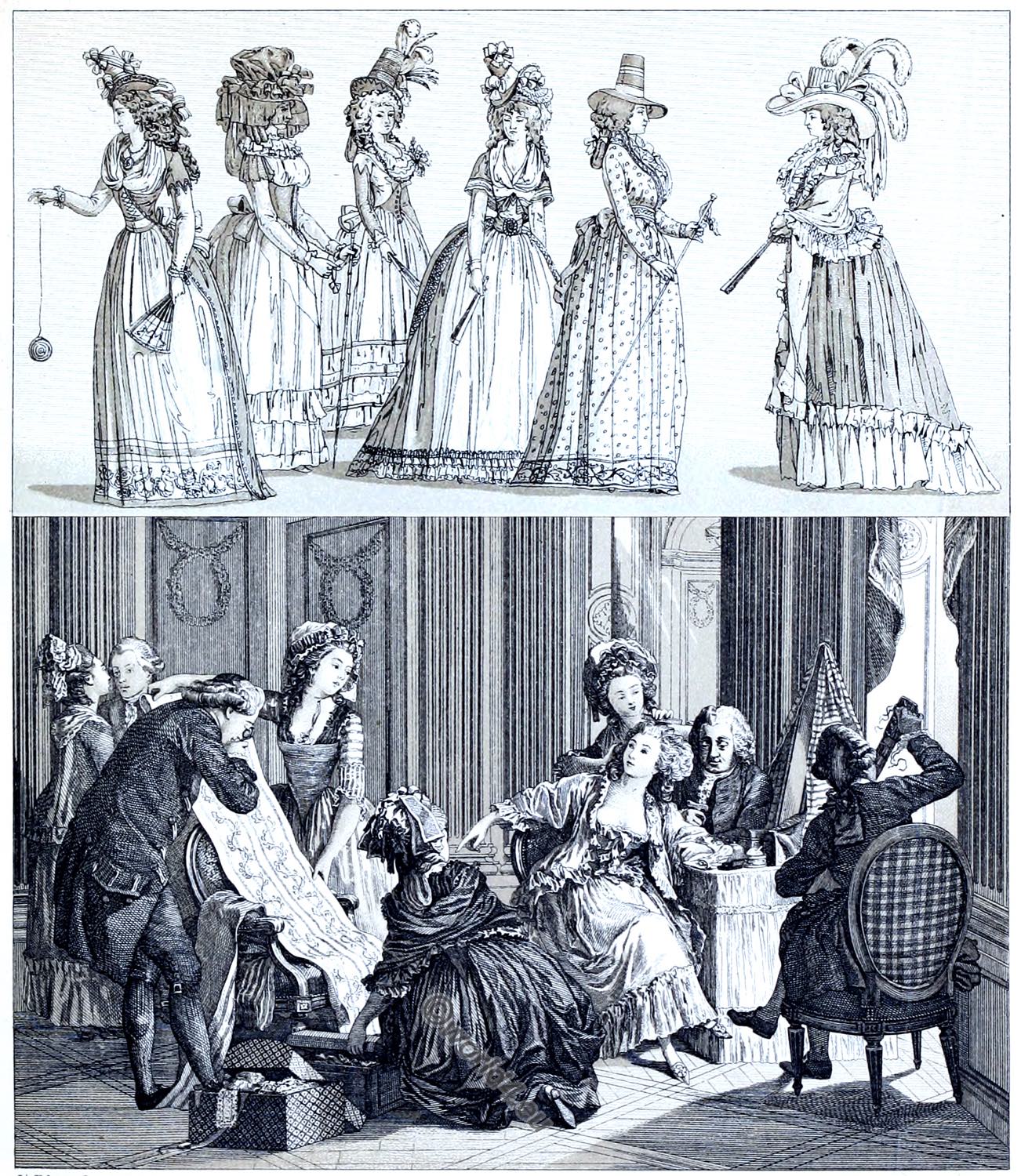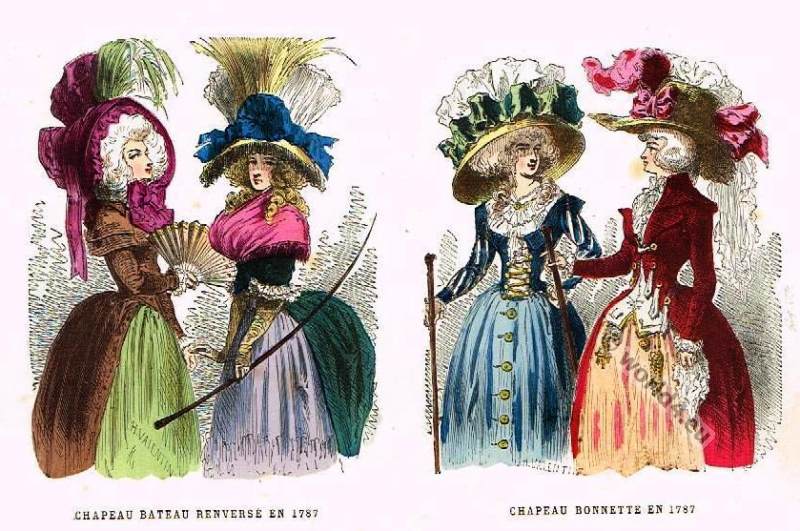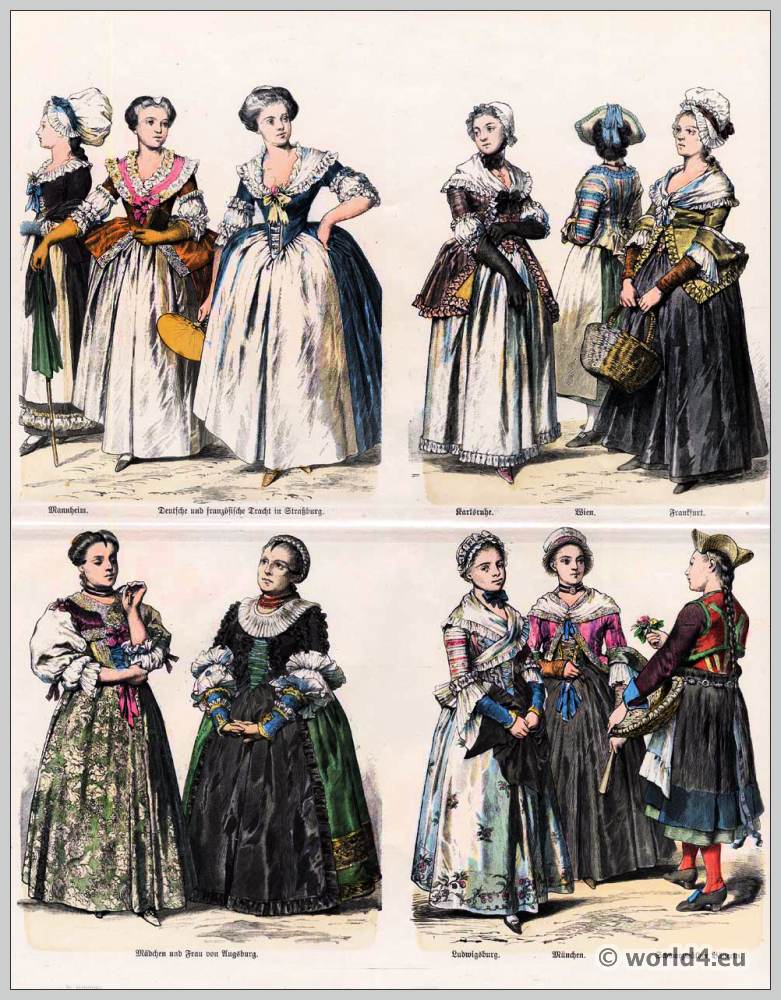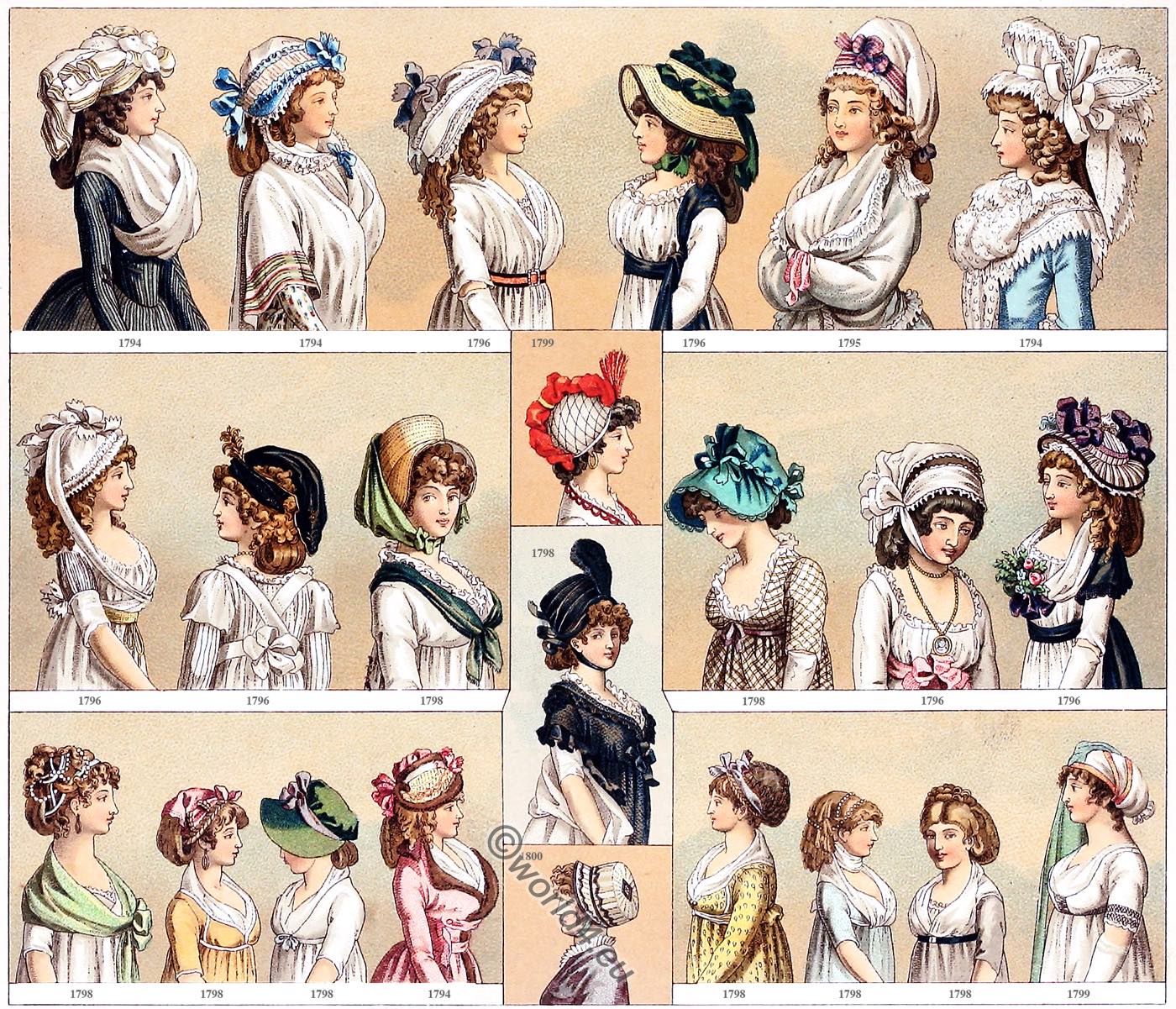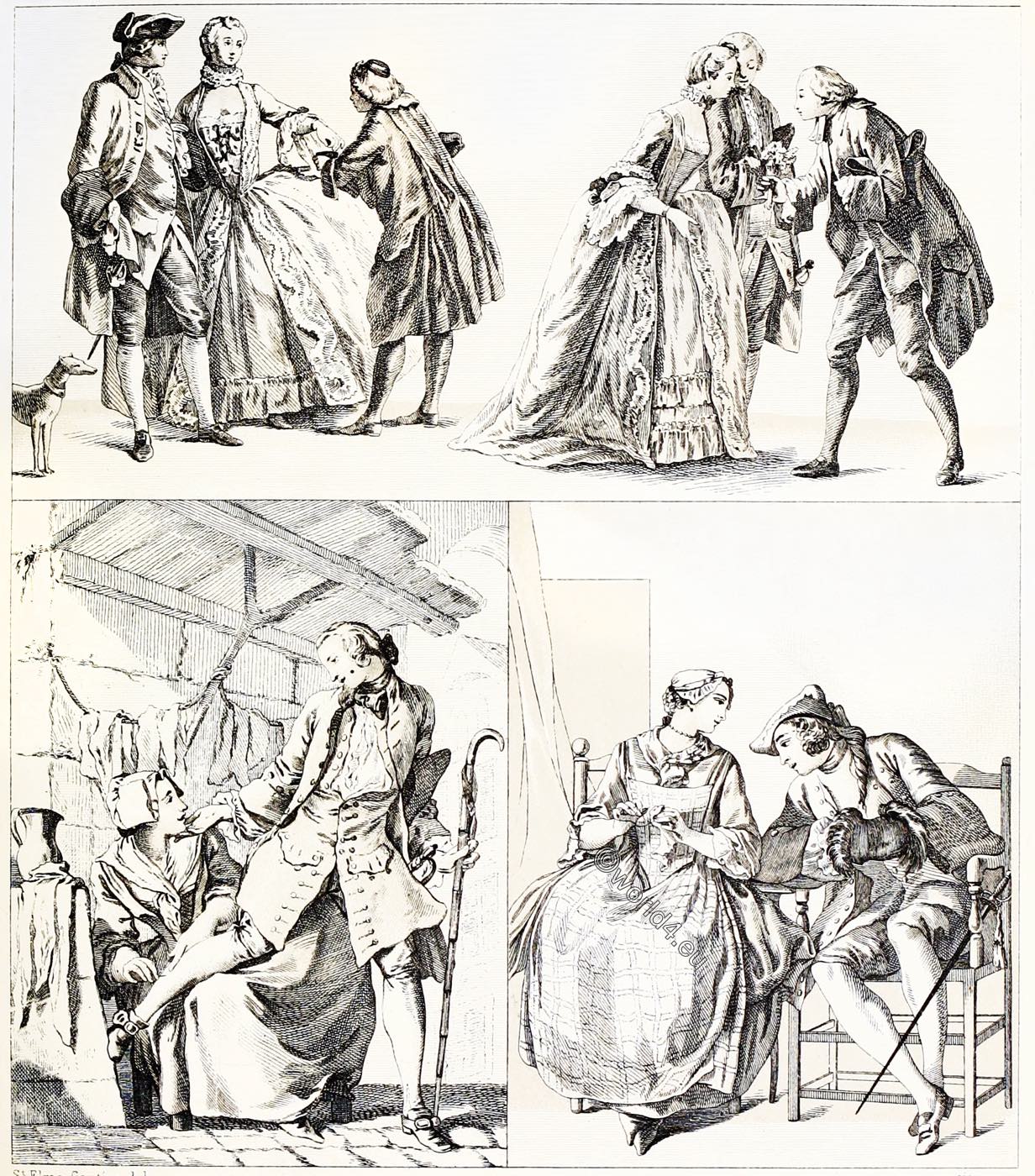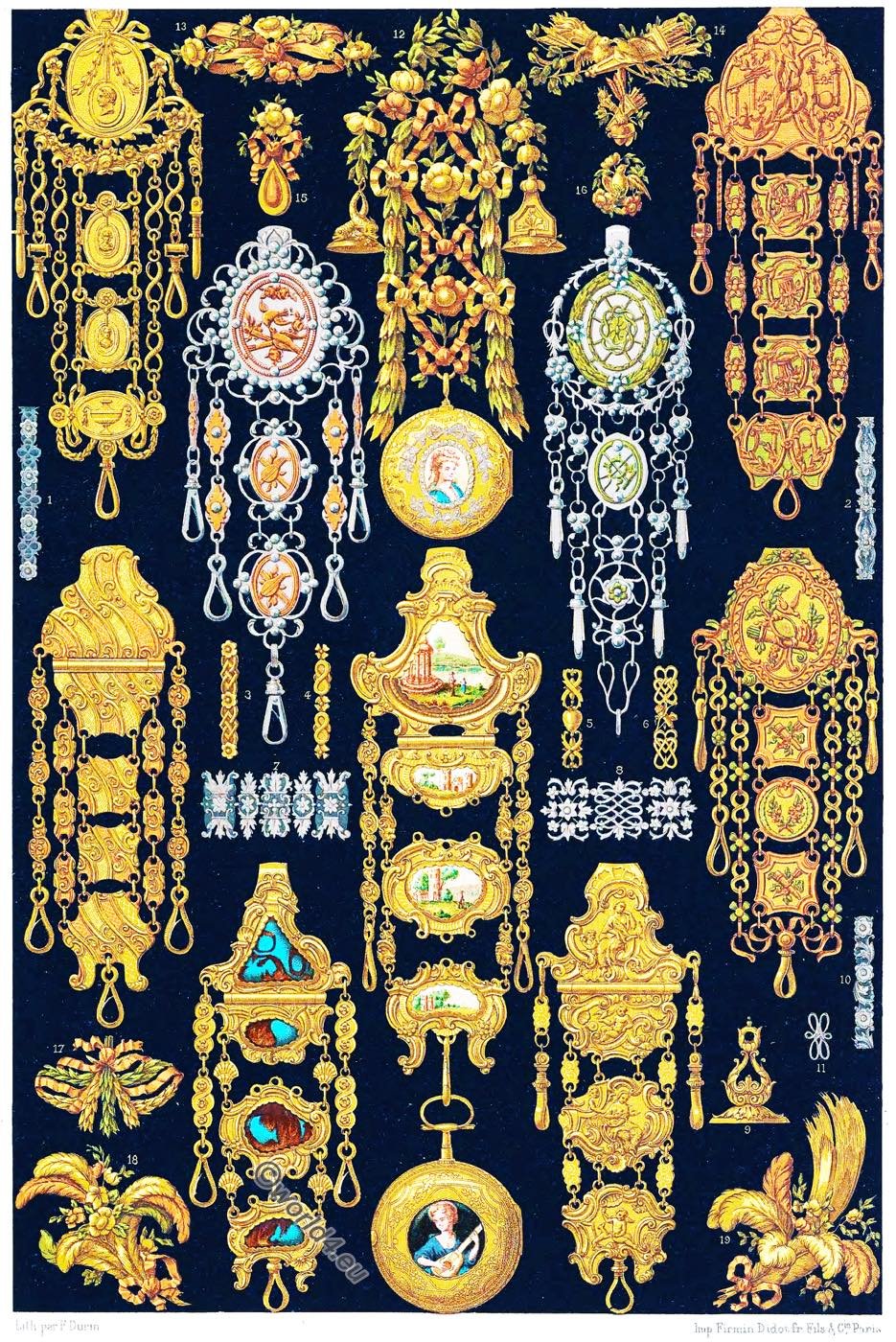
EIGHTEENTH CENTURY. GOLDSMITHS’ WORK AND JEWELLERY.
SOME of the clasps, called châtelaines, with which this plate is filled, belong to the style which was in fashion from 1719 to 1745; a style encouraged by the Oppenords (Gilles-Marie Oppenord 1672–1742) and Meissonier, and carried to such a length by Babel, the celebrated goldsmith; the others belong to a later time.
Jewellery and the sister arts, especially chasing, were then progressing at a rate which has never since been surpassed. The French school, while adopting the liberty of form which prevailed in the new Italian style, succeeded in giving it a peculiar character of lightness and grace.
Nos. 1, 2, 3, 4, 5, 6, 7, 8, 10, 11. – Chains by the French Court jeweler Gilles L’Egaré. These belong to the style of decoration practiced by the Berains and Marots at the close of the seventeenth century and the commencement of the eighteenth.
No. 9. Seal by Gilles L’Egaré. (Same style.)
Nos. 12 to 19. An almost complete set of ladies’ ornaments of the time of Louis XVI.: principal clasp with watch and seals, clasps, pins, and egrets of different dimensions for the dress and hair. Each of the other large clasps represents a complete set, composed of several pieces, either for gentlemen or ladies.
Source: Polychromatic ornament by Auguste Racinet. London, H. Sotheran and Co., 1877.
Related
Discover more from World4 Costume Culture History
Subscribe to get the latest posts sent to your email.

